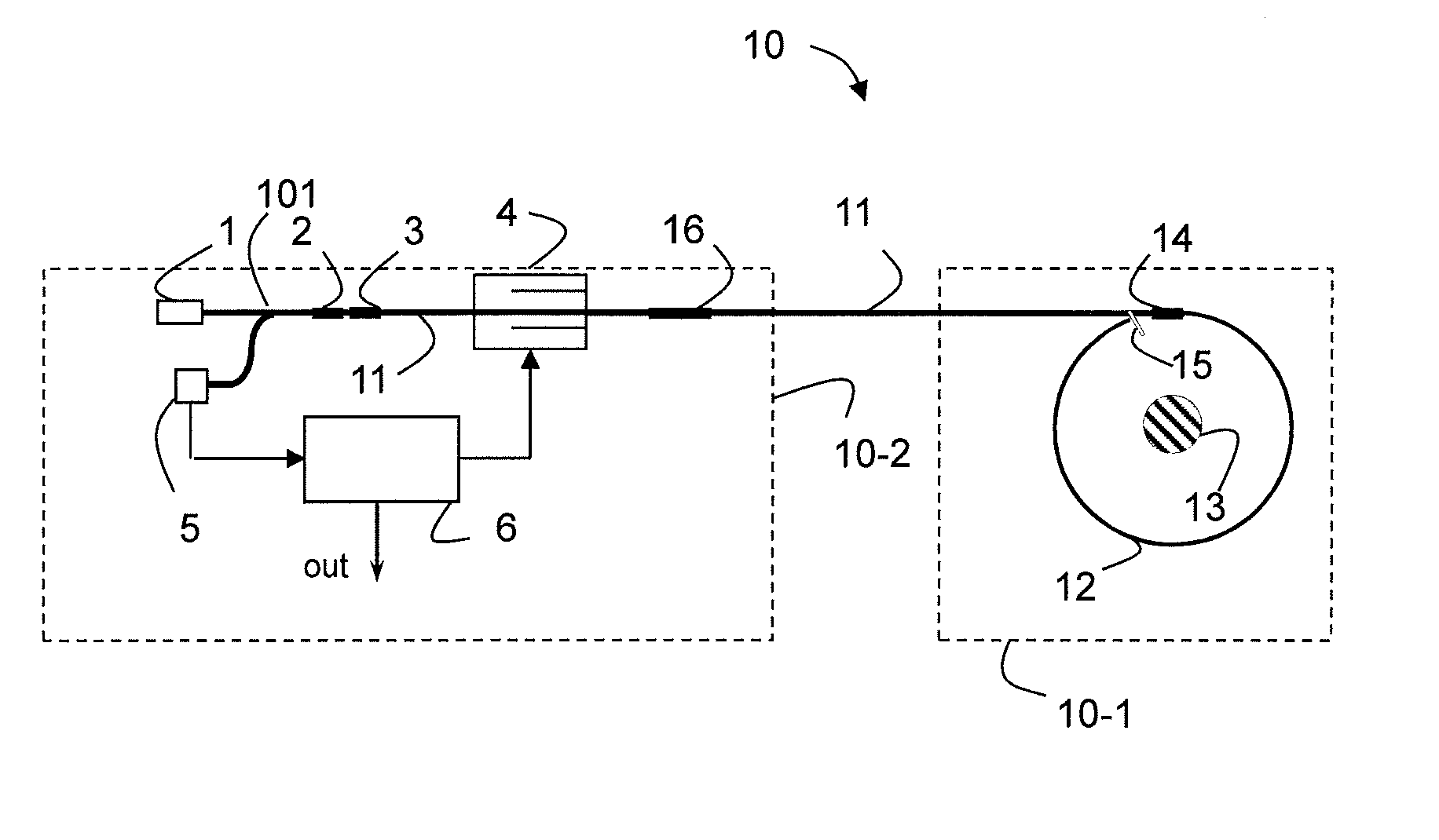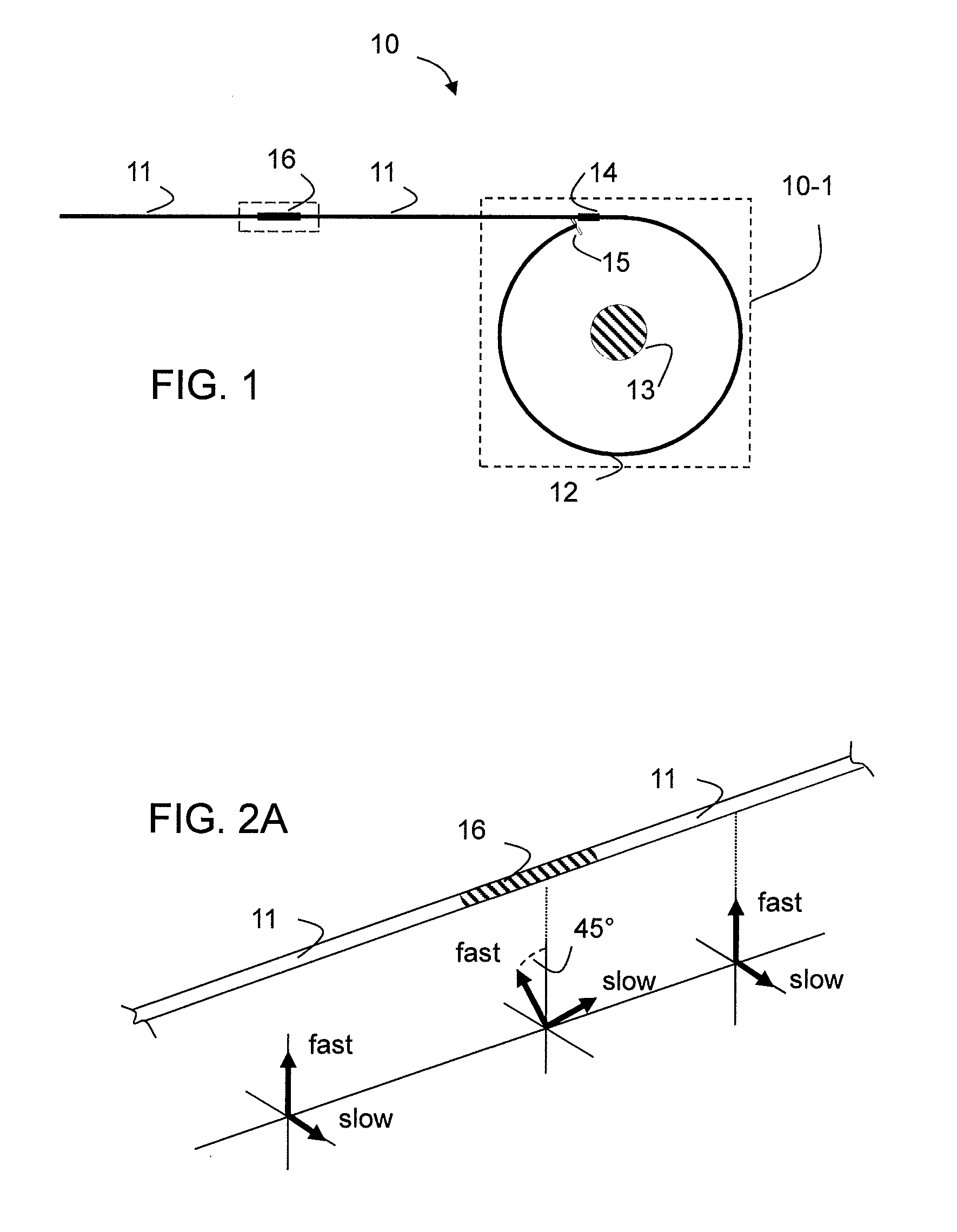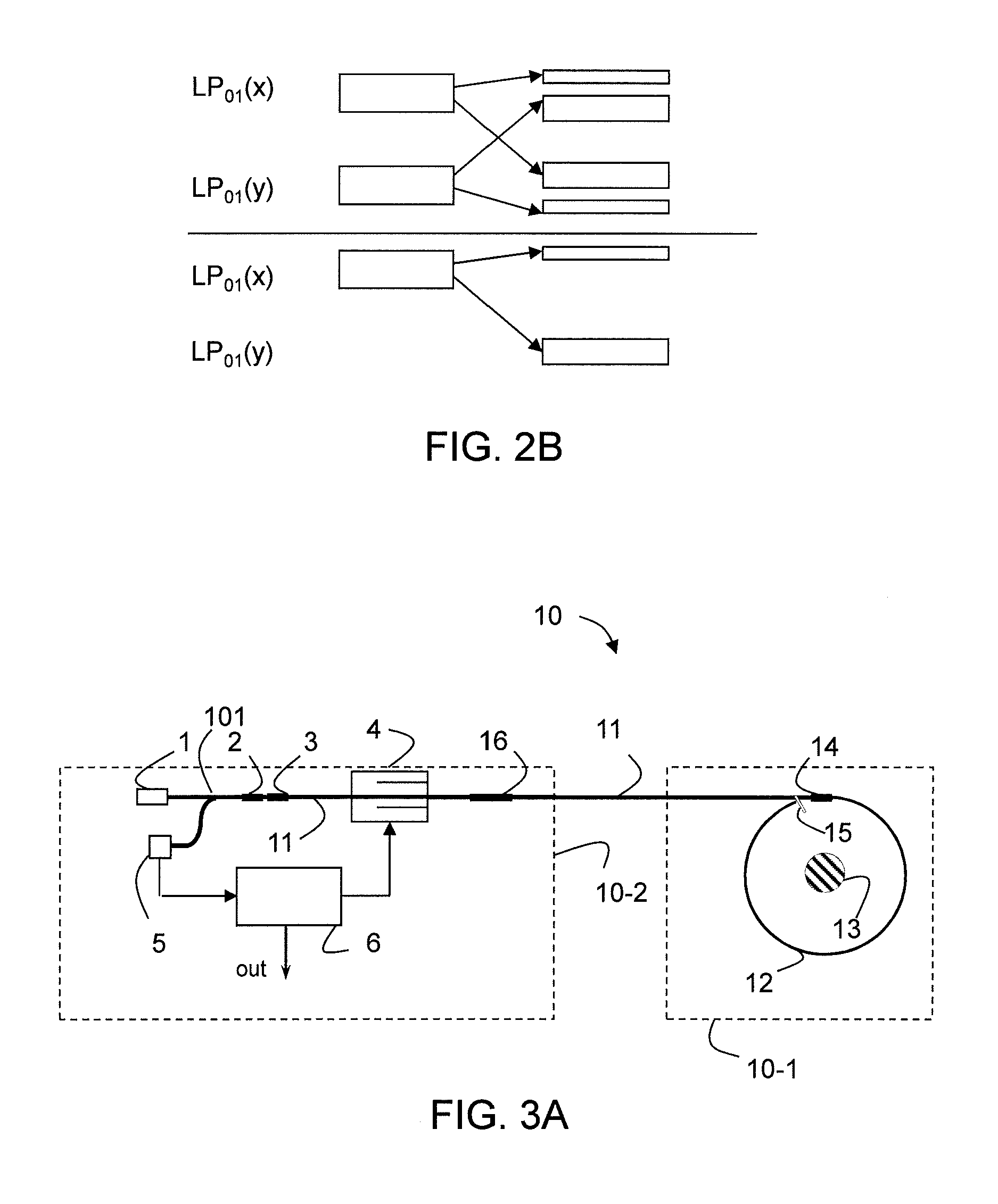Fiber-optic sensor and method
a fiber optic sensor and fiber optic technology, applied in the field of fiber optic sensors, can solve the problems of inability to correct the wavelength shift due to source aging, and the generality of methods that do not compensate a potential higher order
- Summary
- Abstract
- Description
- Claims
- Application Information
AI Technical Summary
Benefits of technology
Problems solved by technology
Method used
Image
Examples
Embodiment Construction
[0058]In FIG. 1 there is shown a general example of the present invention illustrating configurations of the sensor head 10-1 of a reflective fiber-optic current sensor 10 in a schematic manner. In this general example, a polarization maintaining (PM) fiber lead 11 transfers the light into and back from the sensor head which includes a sensing element 12 being in this example a sensing fiber 12 wound in one or more (N) loops around a conductor 13. Depending on the method of measuring the magneto-optic phase shift, either a superposition of light in both of the two orthogonal polarization states of the fundamental PM fiber mode or only light in one polarization state is injected into the sensing fiber element 12.
[0059]Depending on the specific detection technique the linearly polarized light waves may be converted to circular waves before they enter the sensing fiber by using a retarder 14, which in the present example is a fiber-optic QWR (quarter-wave retarder), located at the tran...
PUM
 Login to View More
Login to View More Abstract
Description
Claims
Application Information
 Login to View More
Login to View More - R&D
- Intellectual Property
- Life Sciences
- Materials
- Tech Scout
- Unparalleled Data Quality
- Higher Quality Content
- 60% Fewer Hallucinations
Browse by: Latest US Patents, China's latest patents, Technical Efficacy Thesaurus, Application Domain, Technology Topic, Popular Technical Reports.
© 2025 PatSnap. All rights reserved.Legal|Privacy policy|Modern Slavery Act Transparency Statement|Sitemap|About US| Contact US: help@patsnap.com



